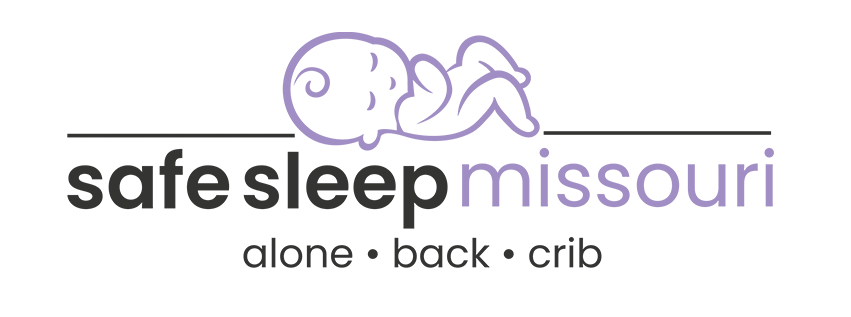Core Focus Areas
By the end of 2022, decrease Infant Deaths Associated with Unsafe Sleep per live birth by 20% from 2018 rates and decrease the disparity in Infant Deaths Associated with Unsafe Sleep per live birth between black and white infants by 25% from 2018.
This goal statement assumes a three-year plan beginning in 2020; with percentage reductions established by the Coalition.
The Missouri Safe Sleep Strategic Plan (SSSP) identifies five core focus areas to reach the goal of reducing sleep-related infant deaths.
The Coalition’s Safe Sleep Work Plan outlines ongoing activities and accomplishments in alignment with the core focus areas of the SSSP.
1.
Messaging and Communication
Focusing on messaging and communication shows how evidence and practice demonstrate the importance of public campaigns to change community and family norms related to safe sleep practices. Messaging tailored to the general public through traditional and non-traditional media allows wide spread dissemination of safe sleep messages, reaching deeply into communities through local businesses, community organizations, faith-based organizations, and other community influencers.
2.
Education
Education and support are necessary to create consistent behavior change in parents’ and other caregivers’ practice of safe sleep behaviors. This includes a wide range, of educational programming and resources intended to be implemented throughout the state. Additionally, education ensures that that all professionals who interact with families and their infants are trained in safe sleep behaviors and model practices for parents and other caregivers is essential to increasing safe sleep across Missouri. Education will focus on families and their caregivers, child care providers, healthcare professionals, and community worker.
3.
Health Equity / Reducing DisparitieS
Addressing health equity and reducing disparities is both a central core focus area, and imbedded throughout the messaging, education and community engagement and advocacy across the state of Missouri. This includes addressing multiple barriers, systemic disparities, social determinants of health and cultural norms that prevent adherence to safe sleep focusing on social determinants of health as a priority in community outreach.
4.
Community Engagement
Community engagement involves reaching deeply into communities across the state to provide events and programs that will appeal to and motivate target audiences to promote safe infant sleep and sustain behaviors. This begins with an analysis of safe sleep messaging and programming in every county to clearly drive SSSP programming where it is most needed. Community engagement includes identifying, customizing and applying programs and interventions that have been demonstrated success in Missouri and other states and 10 communities, with an emphasis on engaging trusted messengers and champions in counties and communities statewide.
5.
Legislation and RegulatioN
Developing and implementing state, city, county and/or institutional policies for regulation, certification, implementation, and reporting is essential to reducing sleep-related infant deaths in Missouri. This includes statewide partnerships with agencies and advocacy groups to foster safe sleep policies, regulations, and reporting, and informing and educate policymakers and state and local legislatures and advocating for evidenced based intervention of the importance of promoting safe infant sleep as a means to reduce infant mortality.




